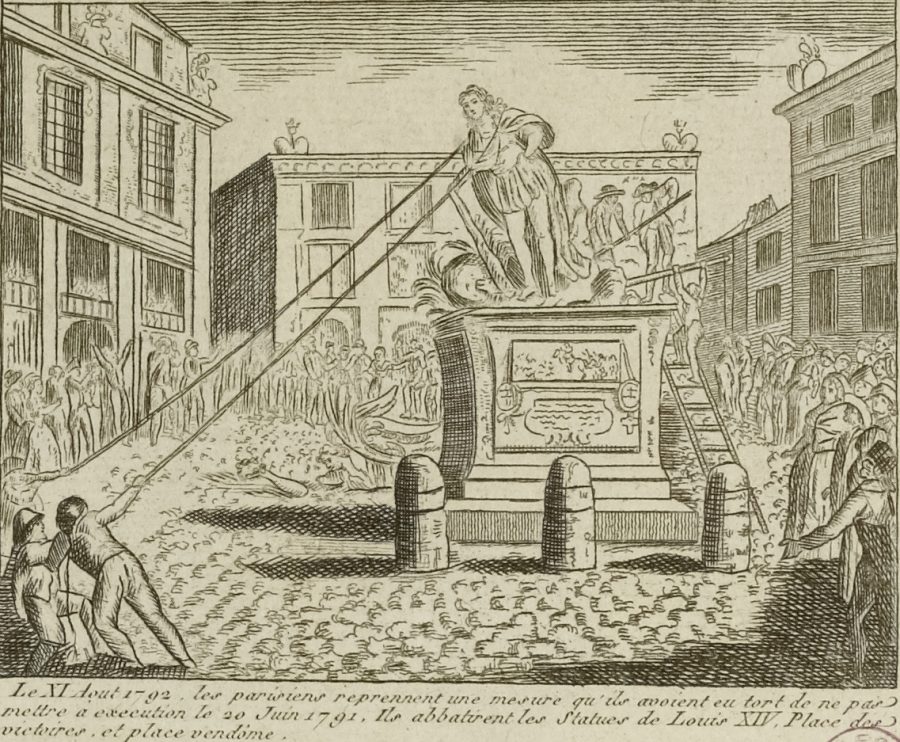Historian Rebecca Zorach to present “Abolition Art” Sunday at Evanston Art Center
Anonymous 1792 etching of a statue of Louis XIV in Paris being torn down by revolutionaries. Rebecca Zorach will speak about the removal of monuments of racist figures in her upcoming lecture at The Evanston Art Center.
February 26, 2021
Northwestern professor and lecturer Rebecca Zorach will present a lecture through the Evanston Art Center Sunday focusing on the relationship between abolition art and policing.
The virtual lecture is part of the EAC’s “In Focus” lecture series, which started last fall to better engage with the community. Exhibition Committee Co-Chair Leslie Scattone said the center had been floating around the idea for the series for over a year, but the pandemic motivated them to follow through with it to give people “intellectually stimulating” content while at home.
Zorach said she wanted to speak about art that aligns with the ideals of abolition and highlight its relation to the removal of historical monuments of racist leaders.
“The issue of whether to remove certain monuments that have associations with systemic racism and if so, what to do with them, has become a hot topic of debate,” Scattone said. “Art has the power to elicit strong emotions and people have reacted passionately.”
Citing protests to take down the Christopher Colombus statue in Chicago, Zorach said police presence in situations like that one is not new to her and is an issue she wants to focus more on. After spending years in activist spaces, she said she was always aware of the inclusion and exclusion police presence created in who could partake in art movements, particularly graffiti.
Zorach also believes a lot of the ways art is presented has relations to policing, especially in what art is considered legitimate based on how it was made and who made it.
“I want to think about how we define art itself, how the idea of rules govern how people even think of and encounter art. . . the institutions of policing and the museum and public art,” Zorach said.
Weinberg junior and activist Sloane Harris echoed her sentiments and said it’s important to assess the meanings of certain statues and art pieces that are upheld by the state as a means of what art should be. She said there are many ways that abolition and art can merge, such as through the reclamation of racist monuments and symbols.
“People should be able to have input if a city is going to take something down, but also it’s cool when people tear things down and put up their own impromptu art,” Harris said.
Harris said it is important for activists and community members to engage in creating new art that celebrates and memorializes Black and Indigenous people.
Zorach does not expect people to come away from her lecture as abolitionists, but she hopes to broaden their perspectives when thinking about police and policing and the ways they contribute to it.
“Coming from the perspective of art history, I might be able to push people a little bit to see (abolition) really is about creativity and imagination,” Zorach said. “For people who are not ready to fully be abolitionists, there are things they can do to work toward harm reduction and push their comfort zone a little bit.”
Email: janeawilson2022@u.northwestern.edu
Twitter: @janeaAwilson
Related Stories:
– Activists, authors share personal stories in prison abolition roundtable
– Evanston Made highlights Black artists during Black History Month
– 24/7/365 broadcast series highlights community artists, Black history



